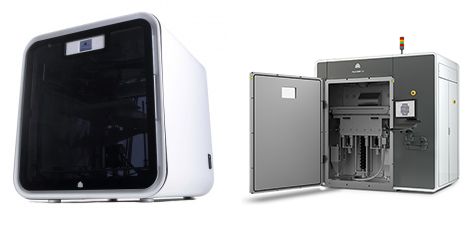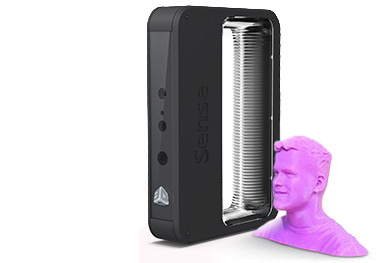How Additive Manufacturing Improves Maintenance Management
Additive manufacturing, more commonly known as 3D printing, is on the verge of going mainstream.
About 66 percent of industrial manufacturers are already using 3D printing, according to a 2014 PwC survey. Most commonly used to quickly create prototypes, this technology also enables maintenance professionals to significantly reduce inventory costs and extend the life spans of outdated assets.
Here, we explain how 3D printing improves manufacturing and maintenance, and how even small companies can ease into the technology without a large investment.
How Is 3D Printing Used in Manufacturing?
For those unfamiliar, 3D printing works like something out of science fiction—a machine uses a computer file to manipulate a specific material (such as plastic or metal) layer-by-layer to form a complete, three-dimensional object.

Time-lapse example of 3D printing
“It’s still somewhat new and futuristic as far as widespread adoption in manufacturing, but it’s becoming more common as a tool not only for prototyping, but also for creating parts in automotive, aerospace, medical and consumer goods,” says Stacey Witten, vice president of investor relations for 3D Systems, which offers 3D printing products and services.
It’s a simple process to wrap your head around, and the main benefit to maintenance management is also quite intuitive: creating spare parts.
Imagine you’re in the plant and get a work order to check the gearbox on an AC motor that operates a particular part of the manufacturing process. But, the gear is deformed, and it is no longer produced by the original manufacturer.
Instead of spending money replacing the entire asset, you could 3D print the part using a similar or stronger material.

Simplified steps for replacing a part through 3D printing
This extends the lifespan of the asset and saves your company thousands of dollars otherwise spent on a complete replacement.
“The materials are so wide-ranging that you can get the same life span, durability and mechanical properties of what you’d be replacing,” Witten says.
Next, we’ll dive deeper into how this process saves money for maintenance teams.
What Are the Benefits of 3D Printing for Maintenance Management?
So, we can print spare parts to keep machines running longer. Awesome! That alone is a strong business case to consider outsourcing on-demand 3D printed parts, or to potentially buy your own printer.
If you need more compelling reasons, here are a few ways that 3D printing improves maintenance management:
Reduces spare parts inventory costs. Maintaining an inventory of spare parts isn’t free; it can cost thousands of dollars each year just to maintain a storeroom full of parts to repair machinery.Some parts are expensive and companies only need to keep a couple of spares on hand to avoid machine downtime.
These types of parts are perfect 3D printing candidates, Witten says. “The complexity of the design doesn’t matter in 3D printing,” she says. “If you want to create something that has high value, but you only need a few, 3D printing is a great fit.”
Reduces assembly costs. Generally, a complex, 3D printed part is cheaper to produce than one that is traditionally tooled out of a CNC machine. This is because some parts are cut from metal and assembled after, while you create a 3D printed part in one solid piece.
Can replace discontinued parts. If maintained properly, assets in a manufacturing plant can operate for many years. But inevitably, a machine will become outdated and spare parts may be difficult to find or too expensive to order.Keep an older asset running longer by outsourcing the 3D printing of discontinued, high-value parts.
Buying Your Own Machine Versus Outsourcing
We’ve seen the benefits of additive manufacturing for maintenance teams, but you may be wondering how much you would need to spend to try this technology.
Printers can cost a few thousand dollars or more, but scanners and materials are cheaper. Let’s take a closer look:
3D printers come in a variety of sizes and functionality, from those that sit on a desktop all the way to production-level machines that can create human-sized objects.

A desktop-sized 3D printer (left) and a large metal-printing machine from 3D Systems
Scanners are mounted or hand-held, and use lasers or other types of light to capture the size and shape of an object. The data is fed through software to create a three-dimensional computer-aided design (CAD) drawing, which can be used to print copies.

A handheld 3D scanner from 3D Systems
Materials, such as various plastics, metals, rubbers or even wood and glass, can be used to create objects. The materials used will affect the durability and temperature resistance of the final product.
It’s important to research the capabilities of 3D printing to determine specifically how it can improve maintenance at your organization. And companies of any size can try it out by outsourcing a small run of parts.
Some companies may simply order a few pieces at a time, or they may buy a printer and bring the process in-house. Alternatively, a maintenance team could buy a scanner device to create CAD files of important parts, so they can have them printed by an outside company on-demand.
It’s a simple, low-risk way to try the technology, Witten says. From there, you can decide how additive manufacturing fits into your business in a beneficial way.
“It’s important to understand that it’s not just a printer; it’s software, scanners, materials and on-demand services,” Witten says. “It can be a full solution that fits into your maintenance plan.”
Next Steps
Check out reviews and features for top computerized maintenance management systems. Many CMMSs can integrate with CAD programs or store CAD files for later use, as well as help manage spare parts inventory.
Read more content about predictive maintenance and other software technologies that can reduce downtime, save money and streamline maintenance.